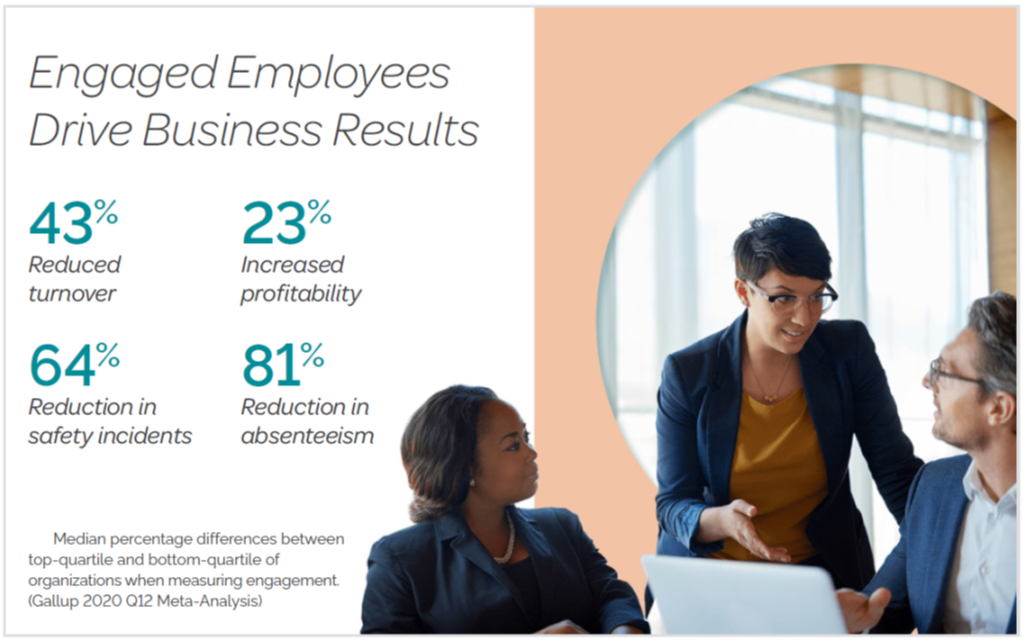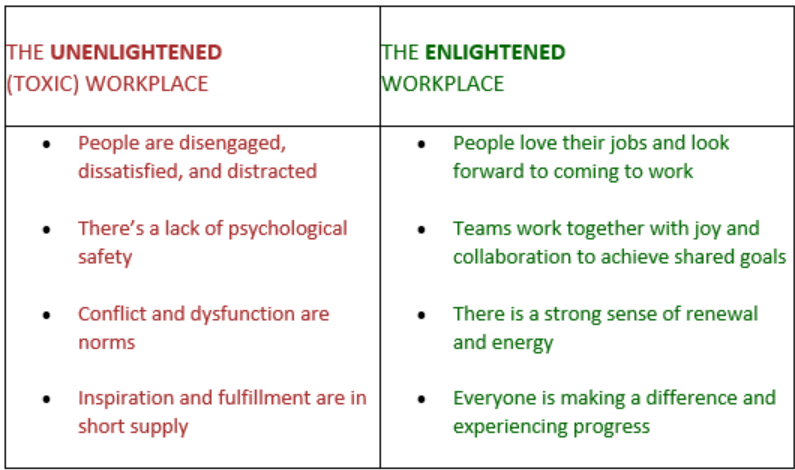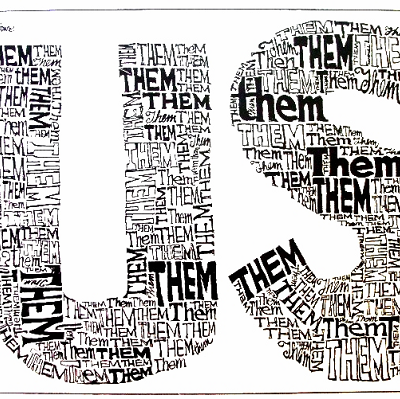Those of you who have been following my blog for a while know that one of my passions is creating enlightened workplaces, starting with my own. Too many of our fellow humans (that may include you as well) are subjected to a dispiriting environment at work. In some cases, downright abusive.
I spent much of 2020 working closely with my colleague, Kristin Brownstone, and several other collaborators, creating a body of work around how to create an enlightened workplace. For us, this is a cause, a movement. We are hosting a free webinar on the topic next week, on Thursday, February 25 at 10 a.m. PT. Please join us.
Here is an article we’ve written on the topic. I hope to see you at the webinar!
The Death of the Toxic Workplace
According to Gallup, 64% of employees are disengaged,1 leading to higher turnover, stalled productivity, uninspired employees, and toxic workplace cultures. It doesn’t help that we are living in a time of social upheaval and crisis, which has resulted in chaos, change, and uncertainty in every type of workplace.
We often hear from leaders that employee engagement and high-performance are top priorities. They understand the proven business benefits of engaged employees—some even report they believe their companies are doing well in these areas. Yet, it’s likely, based on actual engagement numbers, that their teams are not as engaged as they think.
People should love where they work and feel inspired by their organization; because inspired people deliver extraordinary results.
The data show organizations with increased engagement have better organizational outcomes across several business measures.2
There are a multitude of definitions out there for what it means to be an engaged employee or a high-performing team. Search online and you’ll find plenty of academic and corporate-sounding definitions of these terms. However, based on decades of first-hand experience helping clients drive employee engagement and build successful cultures, we have simplified the two definitions:
- Alignment on direction (shared goals)
- High-quality interaction (collaboration)
- A strong sense of renewal and energy (joy)
With engaged employees and high-performing teams, an organization can achieve increased innovation, happier employees, business success, healthier families and communities, and, importantly, increased capacity to address the world’s biggest problems.
It comes down to some basic, core human needs that, when fulfilled, create an environment where anything can be achieved. Managing people with awareness, respect and compassion is not only right from a human perspective, it’s also the smartest thing to do from a business perspective.
Companies that successfully navigate the workplace challenges of today are proactively approaching the employee experience with the goal of helping employees live their best lives so they can bring their best to work and deliver extraordinary results.
When employees experience the workplace as a safe haven from the chaos in the world, a place where they feel supported and fulfilled, they respond by engaging more deeply and bringing their “whole selves” to work.
This is what we call The Enlightened Workplace.
In an enlightened workplace, leaders and managers create a culture where people love their jobs, teams work together with joy and collaboration, and businesses thrive. Creating an enlightened workplace for you and your team is how you become the leader you always wished you had.
he difference between the two environments could not be starker.
In The Enlightened Workplace Project, our goal is to change aspects of corporate culture that are outdated and ineffective, while at the same time helping forward-thinking companies usher in a new way of leading in the workplace.
Leaders and managers who embrace the concepts of the enlightened workplace, and embed them into the fabric of their team and company culture, will find that they lead to higher levels of productivity, balance, resilience, fulfillment, and, ultimately, business success. Because people who feel seen, acknowledged, respected, and accepted for who they are in their entirety, will be more productive, engaged, fulfilled, and successful at work.
Want to join the movement to create your own enlightened workplace? Join us for a free webinar on Thursday, February 25 at 10 a.m. PT to learn more. Also, stay tuned for our discussion series on creating an enlightened workplace.
We hope to see you on Thursday!!
Barbara Fagan-Smith
CEO, ROI
Chief Catalyst, Living ROI
and
Kristin Brownstone
VP, Strategist, ROI
1. James K. Harter, “U.S. Employee Engagement Reverts Back to Pre-COVID-19 Levels,” Gallup.com (Gallup, January 29, 2021), https://www.gallup.com/workplace/321965/employee-engagement-reverts-back-pre-covid-levels.aspx.
2. James K. Harter et al, “The Relationship Between Engagement at Work and Organizational Outcomes,” 10th ed. (Washington D.C.: Gallup, 2020), p. i-44.
3. Harter, “U.S. Employee Engagement Reverts Back to Pre-COVID-19 Levels,” Gallup.com
4. Scott Keller and Mary Meaney, “High-Performing Teams: A Timeless Leadership Topic,” McKinsey & Company (McKinsey & Company, June 28, 2017), https://www.mckinsey.com/business-functions/organization/our-insights/high-performing-teams-a-timeless-leadership-topic.













